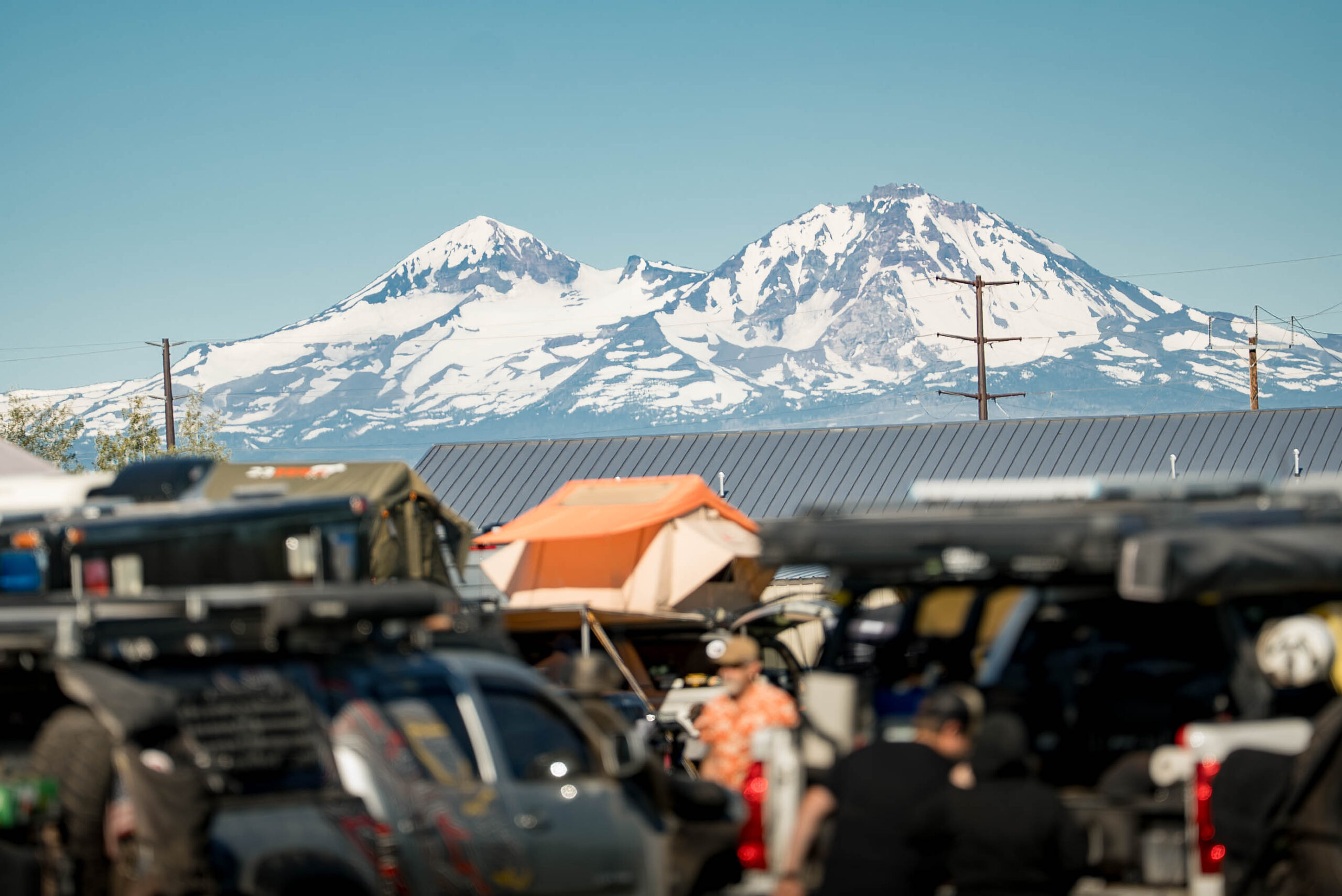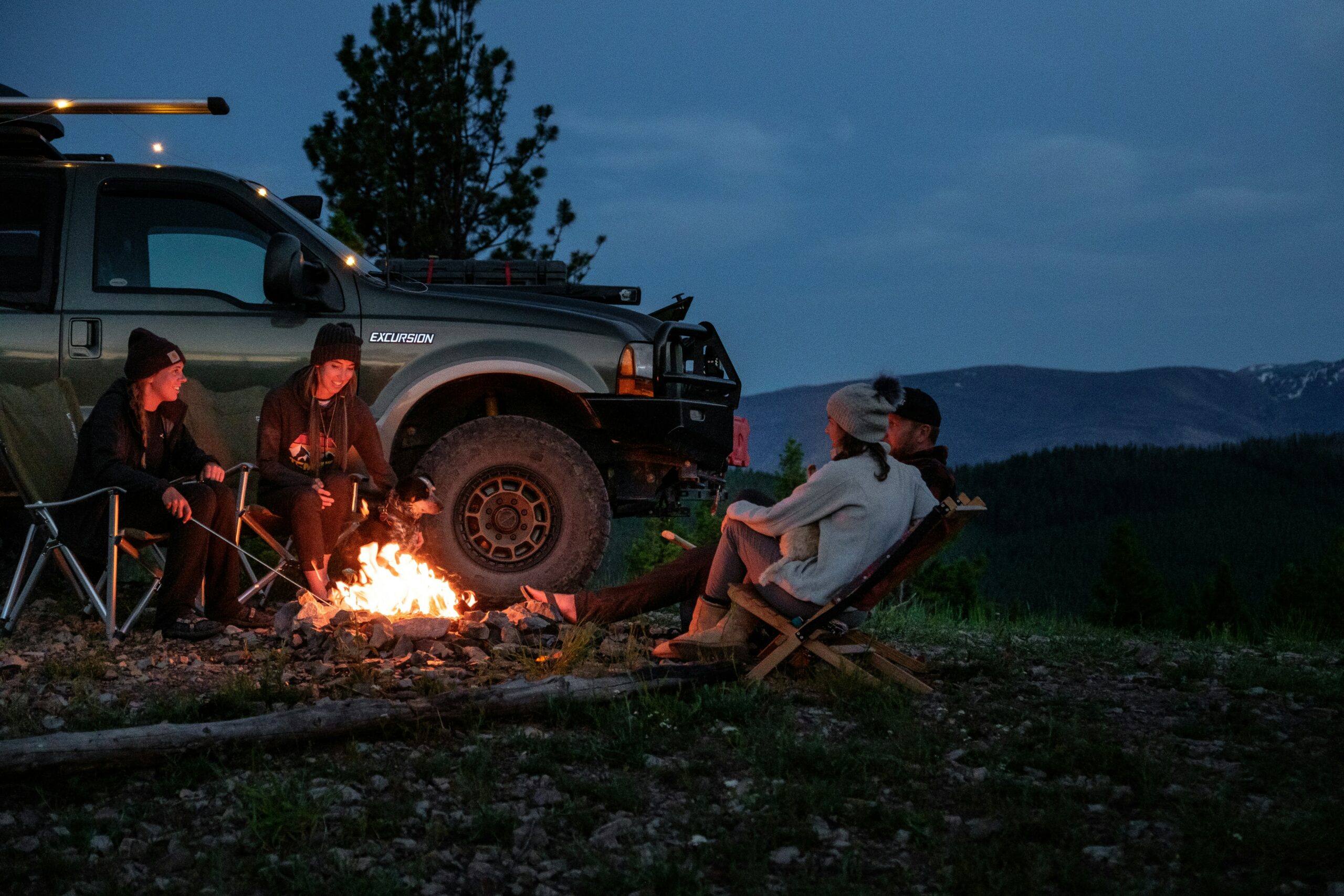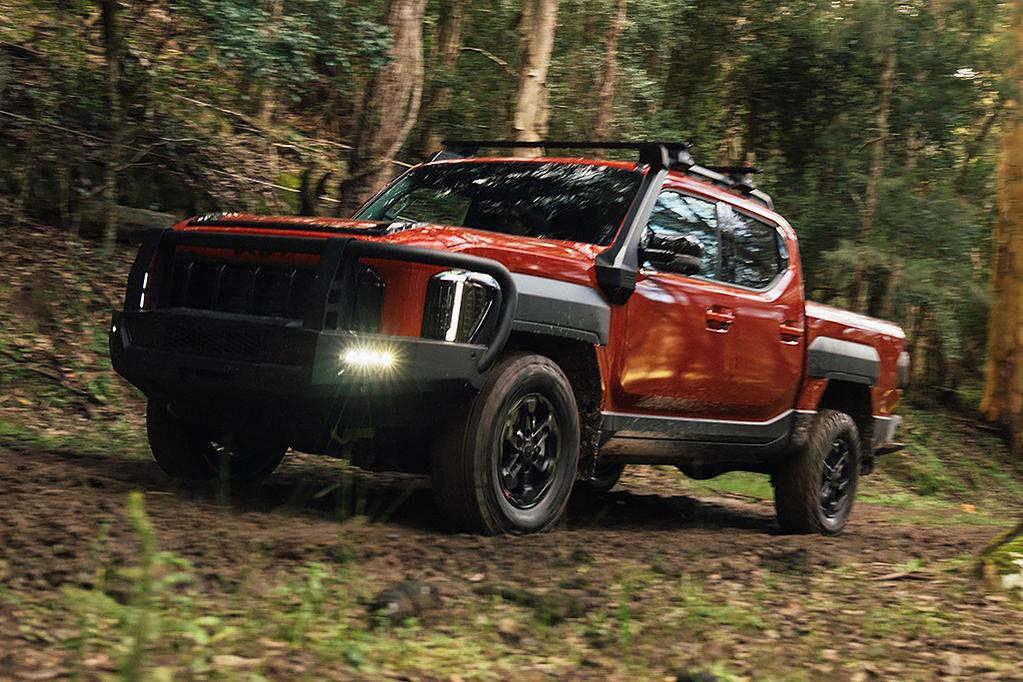Quick Take: The Super Pacific X1 rack and tent system is easy to use and impressively built. Panels and locks work easily, the fit and finish are first-rate, and the tent sets up and collapses in under a minute. Add-ons like the Baja Designs light bar incorporated into the front rack rail made a huge difference on a dark and twisting road at night; it’s an option I would highly recommend.
It’s winter in Oregon, which means it’s the perfect time of year to pack up and head for a warm, sun-baked weekend respite from the arctic blasts at a scenic coastal camping spot.
Typically, my sarcasm would elicit a chuckle since the chances of hitting warm AND dry weather at the Oregon Coast in winter (or most any time of year) are just a tick better than hitting a lotto win on a quick-pick ticket. But lo and behold, after making contact with Portland-based rack and rooftop tent maker Super Pacific and talking them into letting me borrow their new $13,499 X1 Camper setup, a rare atmospheric bubble of wintertime high pressure settled over the Pacific Northwest and cleared the skies of clouds from the coast to the high desert. Let’s camp!
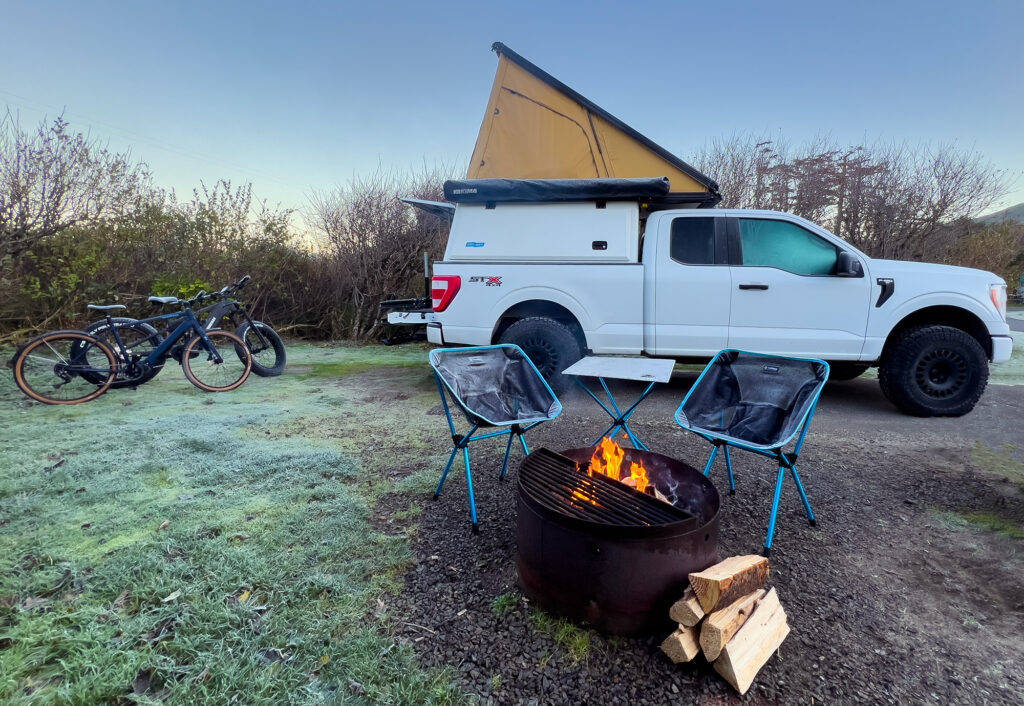
After a tour of Super Pacific’s spacious fabrication and assembly facility, located near the Portland International Airport, my partner and I commandeered Super Pacific’s overland kitted demo Ford F-150 STX with the X1 up top. We hastily packed some essentials, including a lot of warm clothing, for a quick overnight at Cape Lookout, located near Tillamook, the cheese-and-ice cream capital of the Northwest.
While Mother Nature was kind enough to peel back the typical Oregon winter gloom in favor of a weekend of glorious low-angle sunlight, she sort of missed the “warm” request, and overnight temperatures were slated to dip to near-record lows for the typically ocean-warmed Oregon coast. As noted, Super Pacific, a regular exhibitor at Overland Expo’s annual slate of gatherings, is based in Portland, where staff designs, fabricates, and assembles its growing line of racks, rooftop tents, and other products.
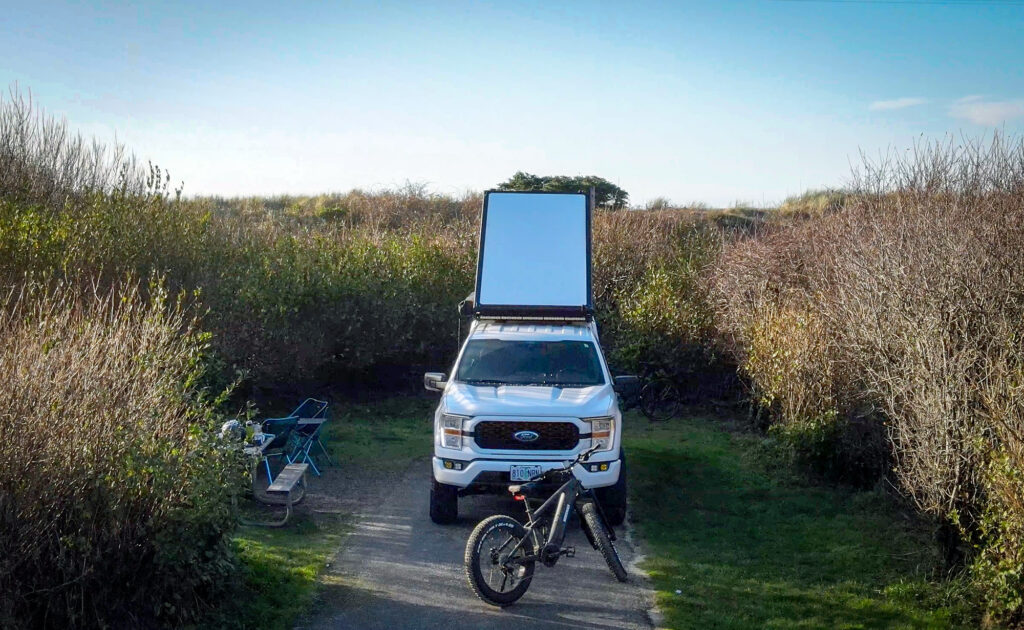
Photo by William Roberson
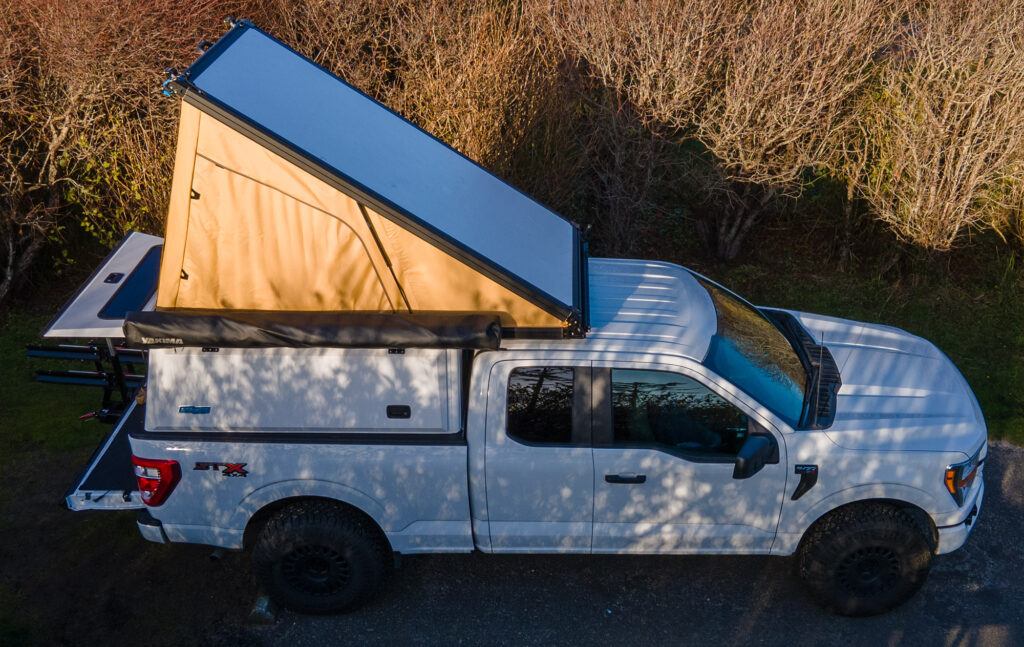
Photo by William Roberson
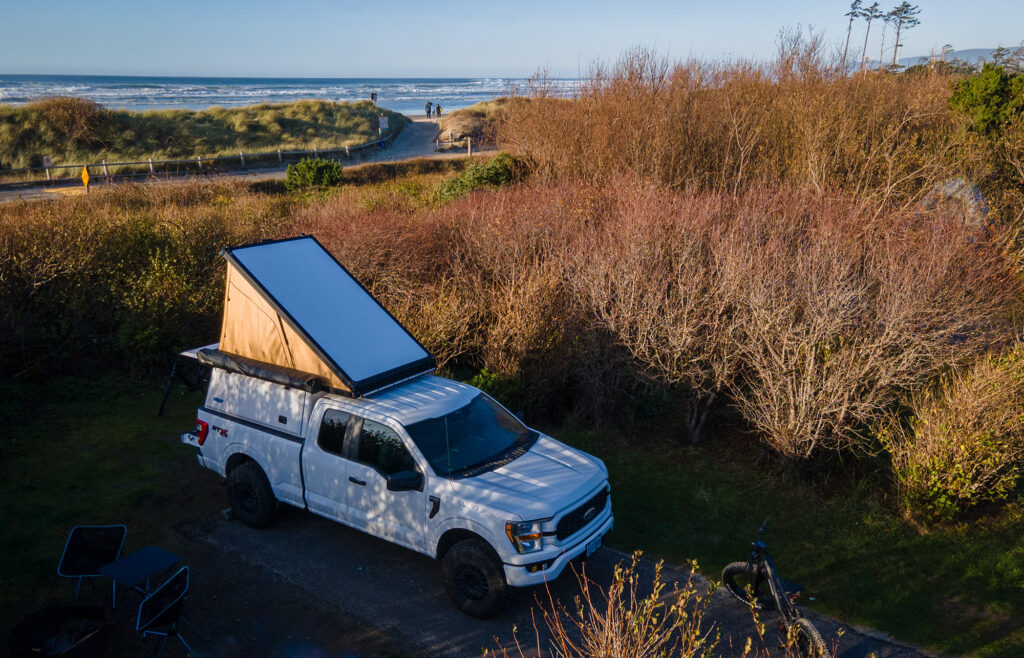
Photo by William Roberson
Once packed up, including a couple of electric bikes, we set out under sunny skies in the well-equipped F-150, and after about 90 minutes of driving, including along the infamously twisting and narrow two-lane Highway 6 through the Oregon Coast Range, we arrived on site as the daylight began to quickly fade away into a brilliantly colorful sunset.
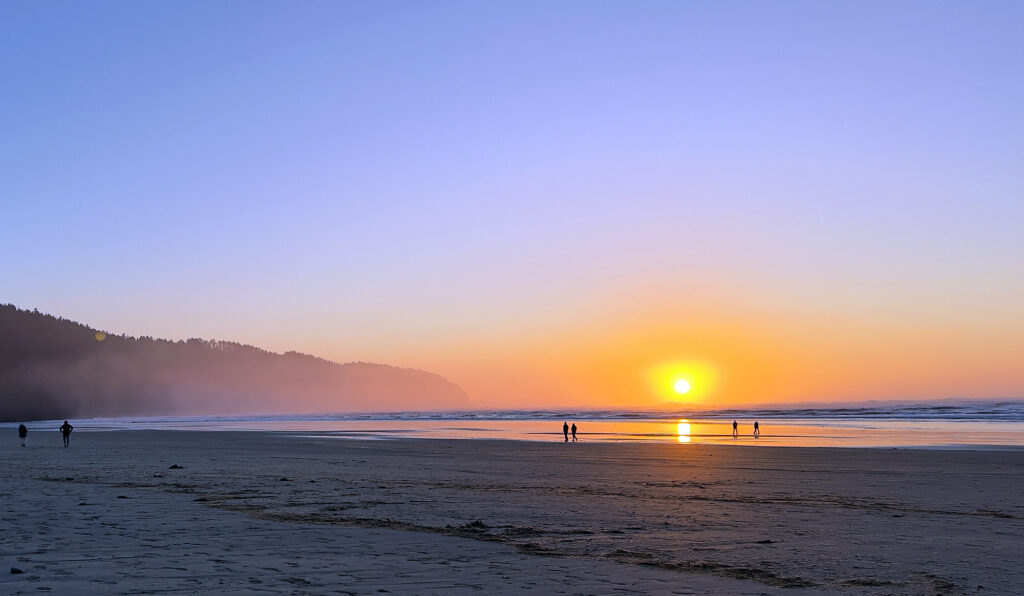
I popped the rear end-cap locks off the X1 rooftop tent and it eased skyward on pressurized struts, locking into place as the canvas walls went taught. With the sun below the horizon but the sky still full of light, we swung the bike rack out of the way to access the back of the truck, then set up pillows, blankets, and sleeping bags on the Exped Basecamp inflatable mattress. I used one of two movable MOLLE-ready patch panels to hold a Goal Zero Yeti power station up in the tent since my better half would be using an electric blanket to help fend off the cold while sleeping. The Yeti would also charge our phones, lanterns, and headlamps.
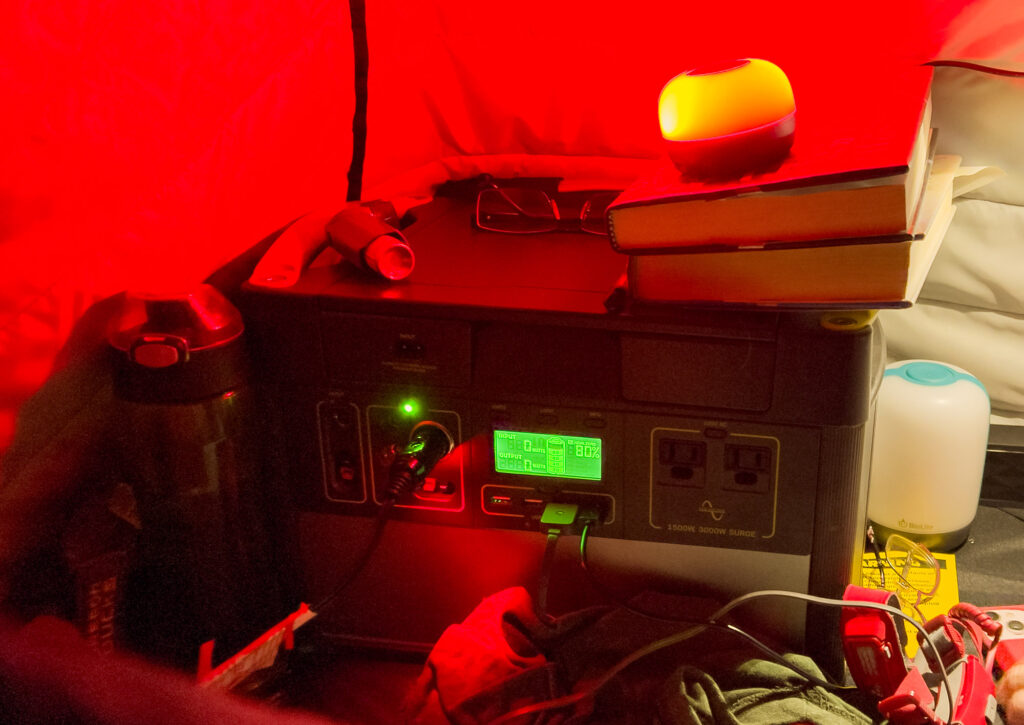
Fortunately, we had a bit of a heads up on the unusual (for the Oregon coast) sub-freezing temperatures, and Super Pacific was kind enough to line the interior of the tent with their new $695 ThermaPuff insulation kit, which is specifically sized to blanket the walls and ceiling of the tent. It easily clips into place while also retaining zip-outs for venting airflow and accessing window openings. They also added a large Pendleton blanket to our camp kit for some added warmth and bit more Oregon-based flare.
Back at the Super Pacific facility, I was told the team likens their approach to constructing the X1 and other products to building aircraft, with lightweight, precision, and strength as the focus. The company hand-fits each piece of a rack and then rivets together the structure before adding the tent and other finishing elements. A spokesperson told Overland Expo Compass the X1 rack and tent weigh between 340 and 380 pounds depending on the vehicle, and at this time, the X1 will fit a fair number of popular overlanding choices, including Jeep Gladiator and Honda Ridgeline trucks.
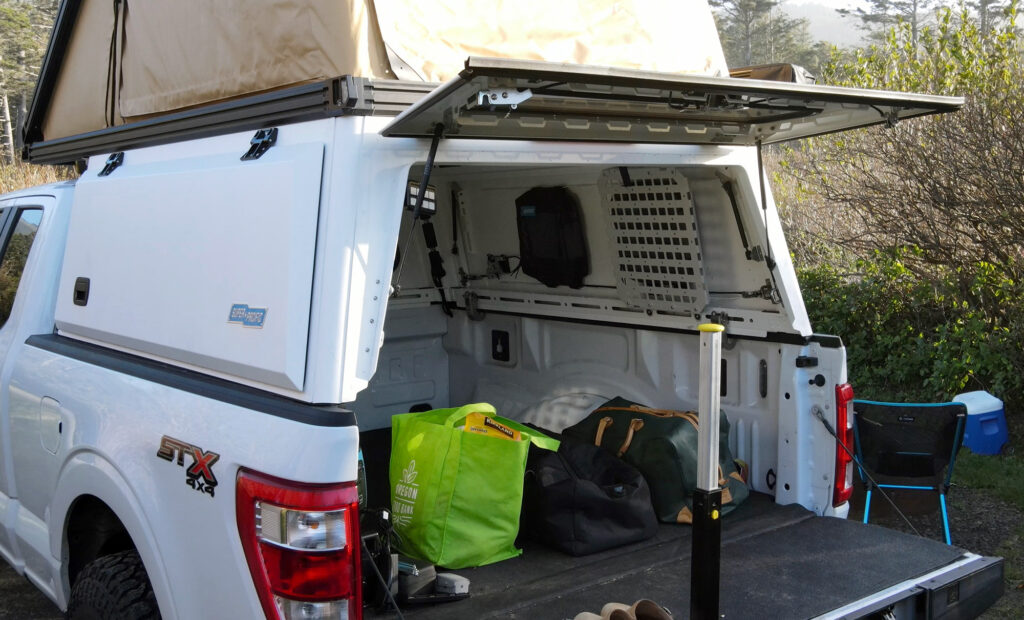
Photo by William Roberson
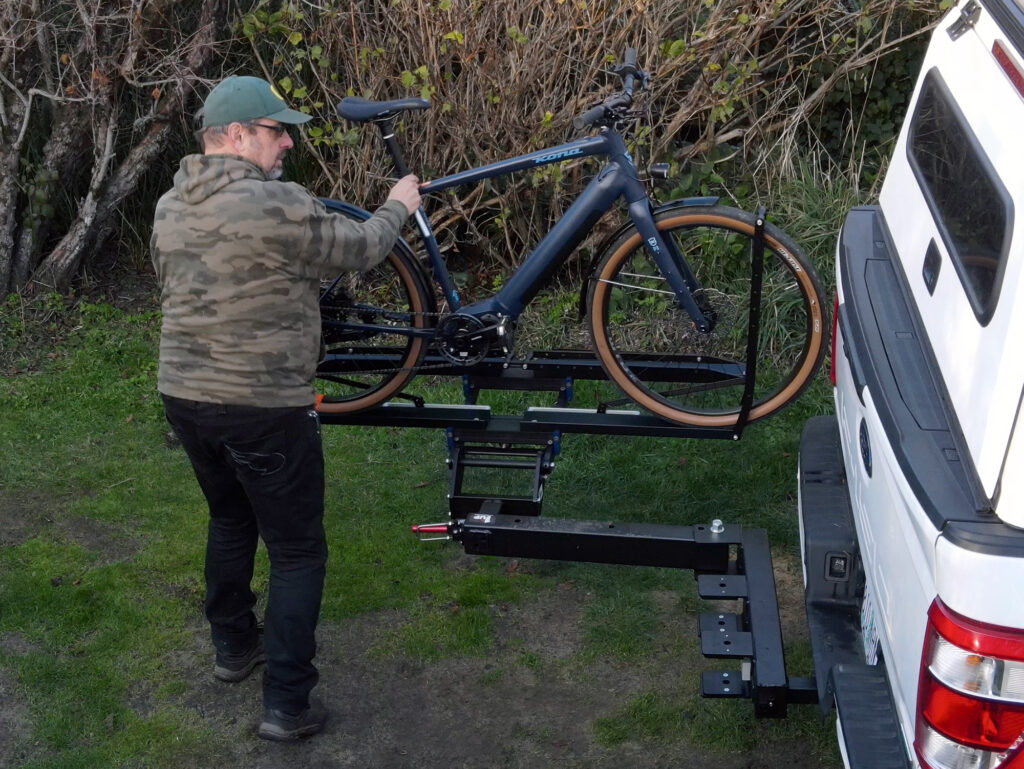
Photo by William Roberson
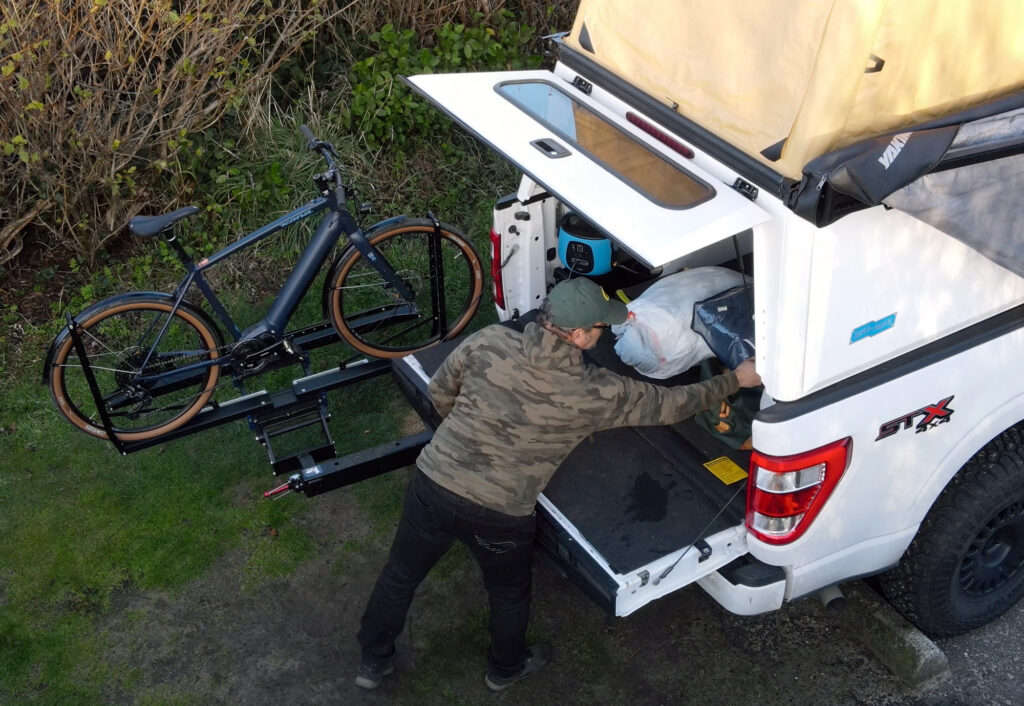
Photo by William Roberson
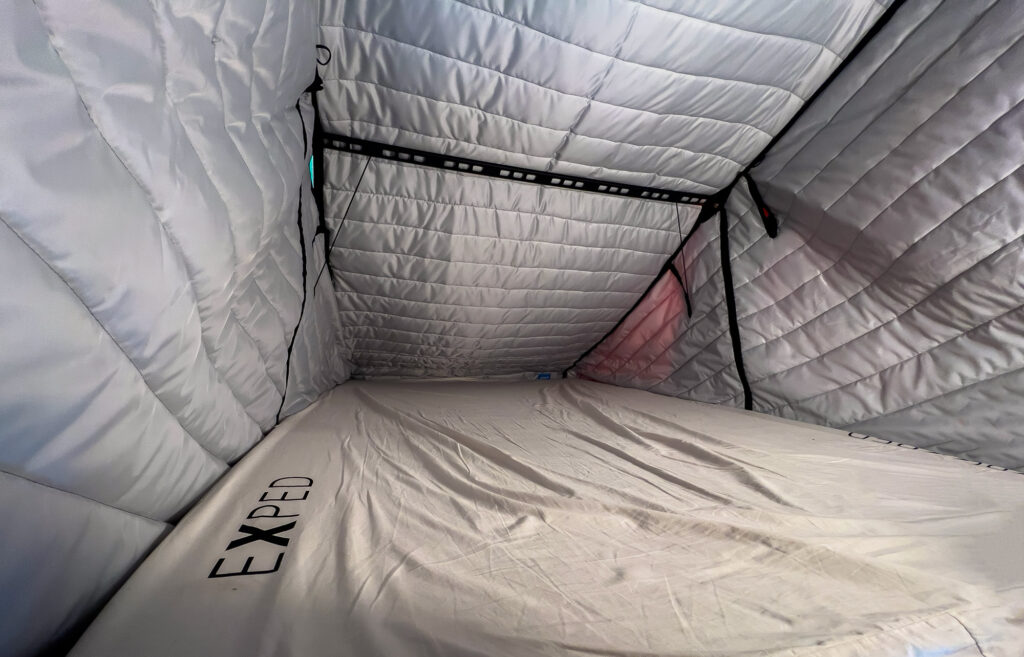
Photo by William Roberson
Large CNC machines at the Portland factory cut end caps and other pieces for specific fitment. The X1’s side access panels and rear door include adjustable opening angles for owners to customize their fully open position in order to clear awnings or other gear. Each panel locks with a key for security, and acrylic windows are an option. The panels also lock, open, and close from inside the truck bed and feature numerous mounting points for MOLLE panels to simplify mounting up gear. Our X1 had no “interior” in the truck bed, which was a good thing since the Himiway Cobra Pro’s fat tires were a touch too big for the 1Up bike rack’s brackets, and we did not have time to get the fat tire adapters, which the company does offer. With the tent open and nothing in the truck bed, there is nearly 8 feet of clearance while standing near the tailgate. Cargo panels and the tent floor can be moved about to create headroom when the tent is unoccupied.
With darkness enveloping the coast, we tucked into the snug but still roomy tent. I powered up the Yeti, plugged in phones and the electric blanket before stretchng out under the covers. Waves crashing against the nearby beach lulled us to sleep, and the temperature outside the tent dipped below freezing – and kept falling.
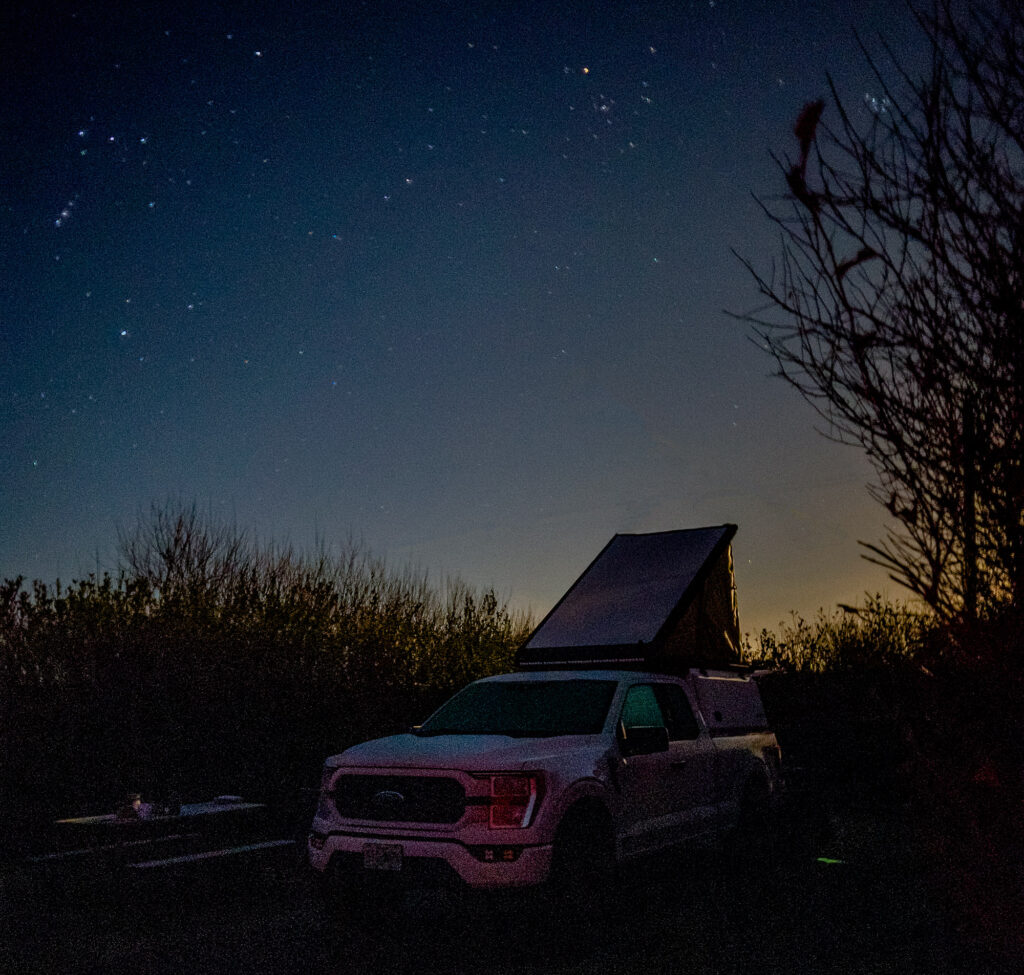
After a restful night that included a somewhat awkward dismount from the tent to answer nature’s 2 a.m. call (Pro Tip: bring a small stepladder for easier tent access), we woke at dawn to a campsite coated in a robust crust of ice. The temperature read 24 degrees Fahrenheit, and I pulled on my secret weapon against the cold – battery-powered Tour Master Synergy heated motorcycle gloves – and got a fire going. Our ebikes, coffee maker, camp chairs, and a few other bits were encased in a thick coating of frost. I eventually got the mission-critical coffee maker up and running, and as the winter sun barely cleared the distant ridges of Cape Lookout, the temperature crept back into the 30s.
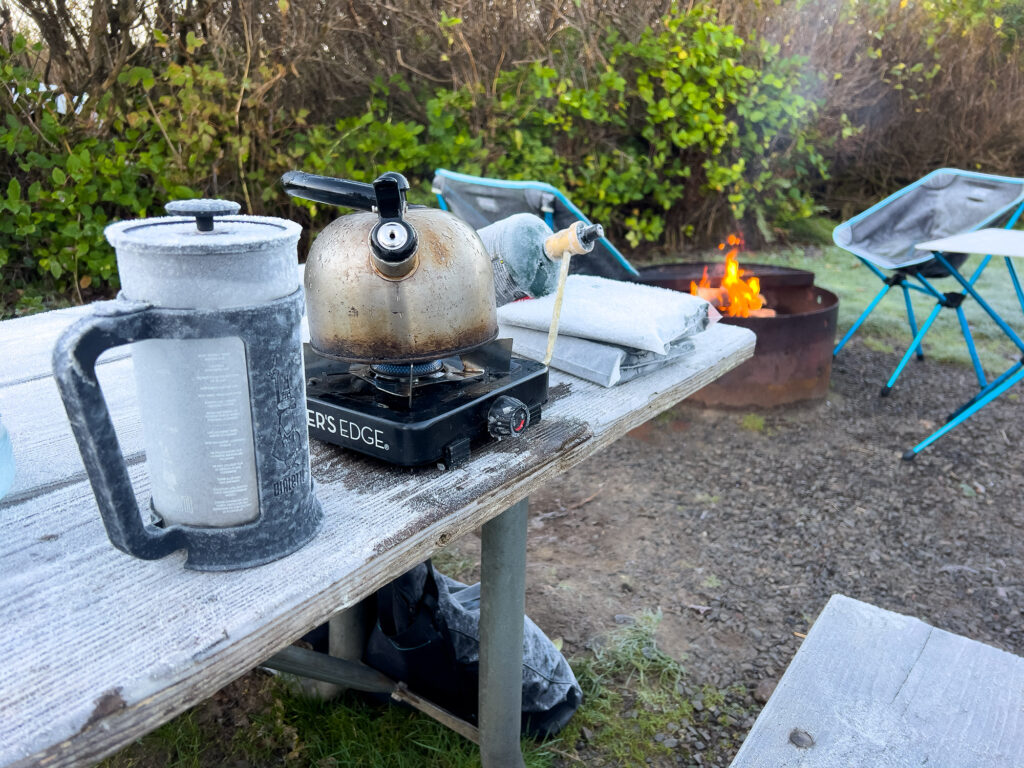
Caffeinated and breakfasted, we set out for a hike along a winding path that took us through sections of coastal rainforest on the cape, which juts nearly a mile out into the Pacific Ocean. Serendipitously, our visit coincided with the King Tides, a partnership between the Moon and oceans that results in some of the highest tides of the year worldwide. With the highest tide hitting just after breakfast, we were able to see huge waves sweep all the way up onto the shallow dunes that separated the sea from our camping plot. For weeks, local officials had warned people to stay off the beaches at high tide, but there were still a brave (or foolish) few who were chased from the sand as the ocean roared, pummeling the protective dunes and pelting the tall cliffs around the cape.
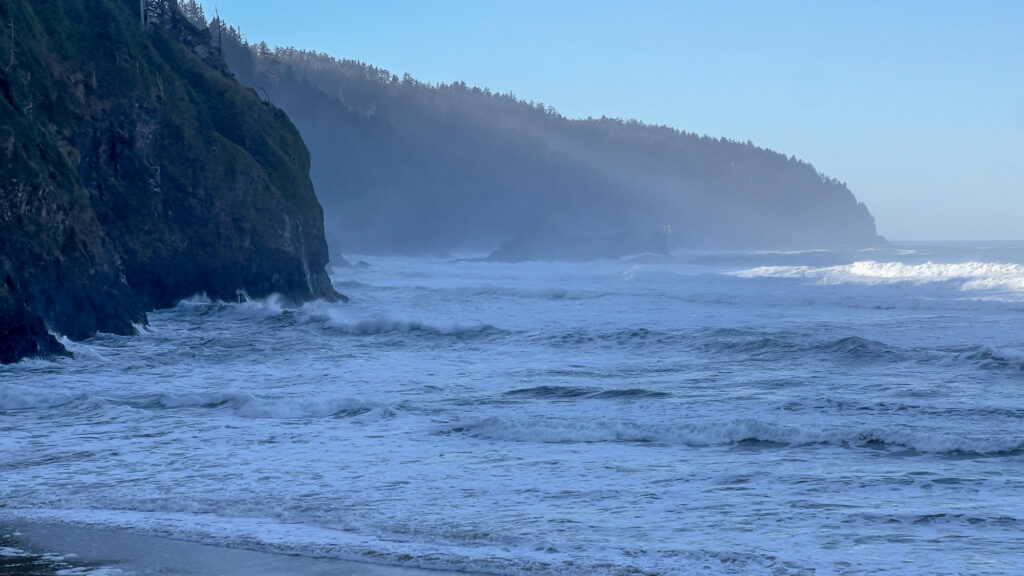
Photo by William Roberson
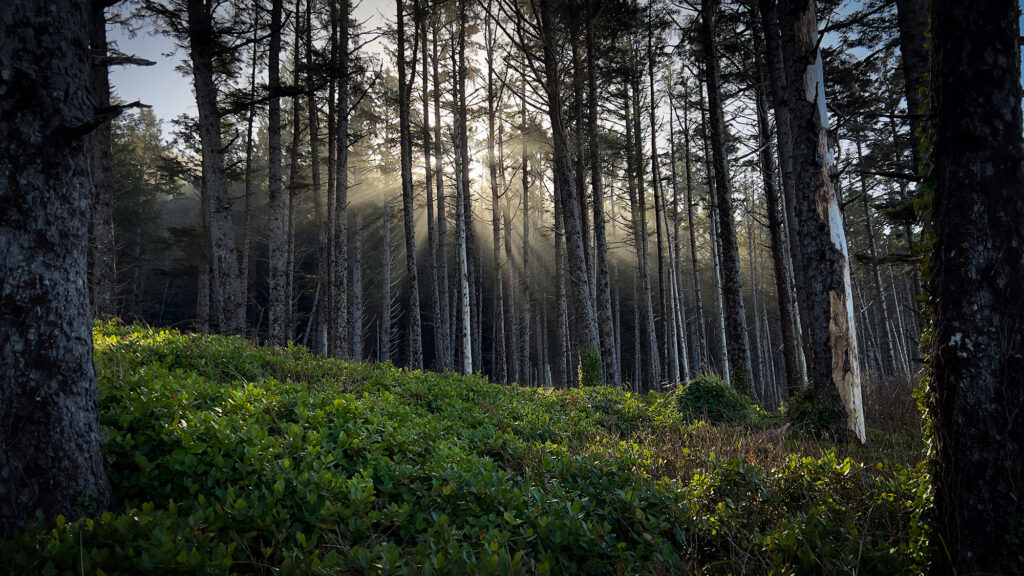
Photo by William Roberson
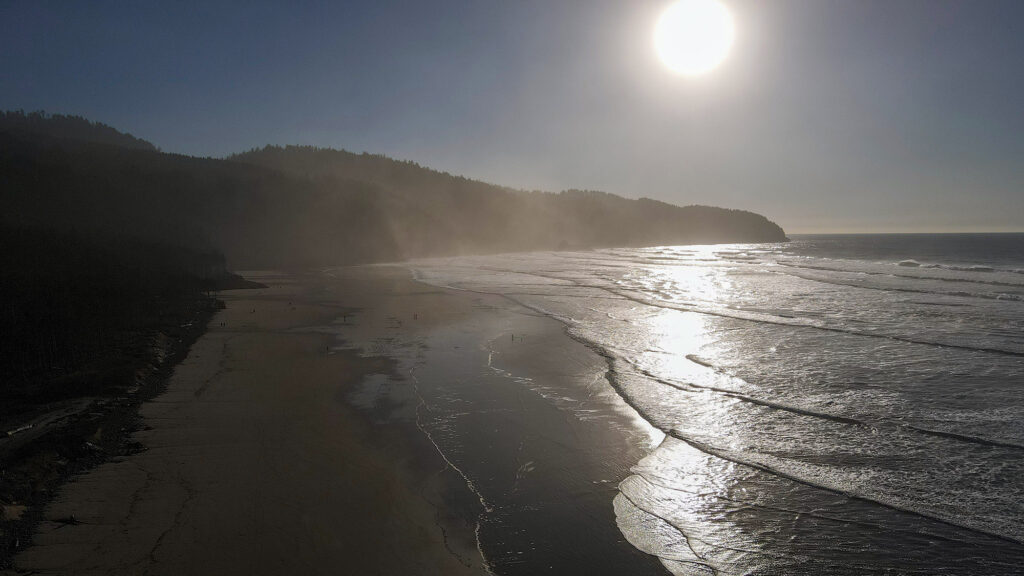
Photo by William Roberson
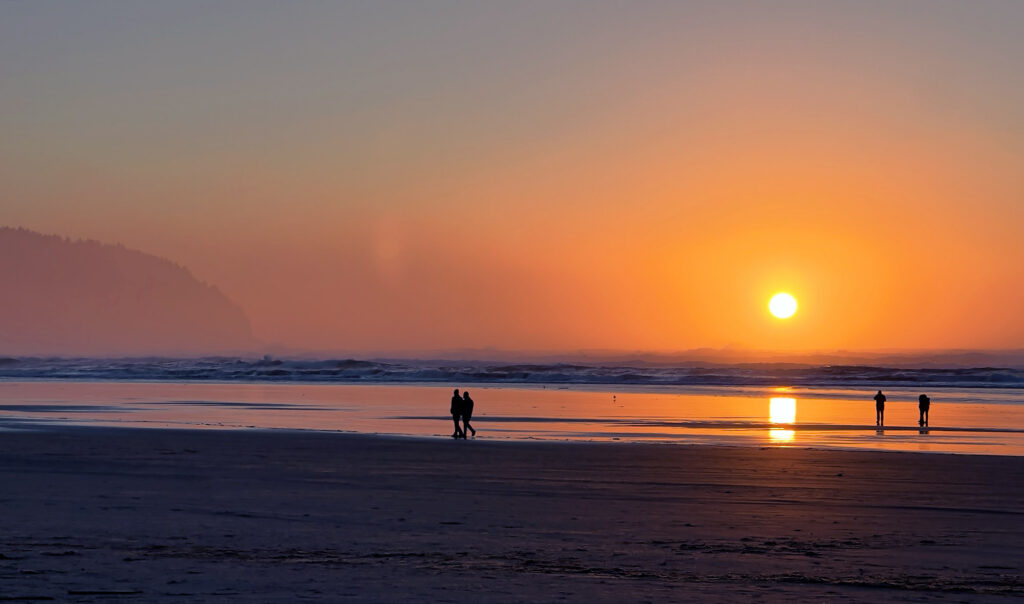
Photo by William Roberson
By the time we returned from our rainforest hike, the tide had receded far from the beachhead. Very low tides are the flip side of the King tides, and a few people wandered onto the wide, freshly scrubbed reaches of sand to hunt for shells, agates, tortured bits of driftwood, or to just stroll along the miles of fine sand as the rare winter sun brought a touch of warmth and a large dollop of beauty to the cape.
As the sun too quickly dipped again toward the horizon, we stowed our gear along with the tent and drove into nearby Tillamook, looking for a proper venue to watch some college football while enjoying some fresh local seafood. We ended up driving north on Highway 101 to the nearby town of Garibaldi and locating Kelly’s Place, where dozens of photos of local anglers showing off their catches lined the walls, and the fish and chips are just the right mix of fresh caught and deep fried. After a sumptuous seafood and football fiesta, we pointed the F-150 back up Highway 6 towards Portland.

As the lights of Tillamook disappeared into the inky darkness behind us, I clicked on the Ford’s high beams – and supplemented them with the four Baja Design driving and fog light modules mounted in the bumpers. That helped, but it was only when I keyed the Switch Pro panel in the cab to activate the Baja Designs light bar mounted to the front of the X1 rack that the night turned into day in front of the Ford.
Highway 6 is beautiful by day (and big fun on a motorcycle) but still treacherous; it is especially so at night as it is only two small lanes closely tracing the chaotic volcanic topography, and near the summit of the Cascade Range pass, it’s also quite rough in many spots. There is no lighting along the roadway until it empties out into the Willamette Valley, some 50 miles distant, and connects with Highway 26, a divided four-lane arterial that is a primary coastal route. But the Ford, sporting a short but practical lift and 32-inch AT tires, smoothed right over the rough stretches of the roadway, and the 40 miniature suns on the light bar illuminated the way far ahead while also warning drivers around blind corners that there was oncoming traffic. Soon enough, we were back in Portland’s hipster bosom, properly rested and recreated.
Super Pacific’s X1 camper was roomy, comfortable, and well-built. Some sort of internal ladder would be the one bit I would add to better get up into and down from the tent space, especially when groggy with sleep, but for someone decades younger than myself, it’s likely not an issue. While I was warm enough in base layers and jammies for sleep, even multiple layers and the electric blanket could not get my partner up to a comfortable temperature as the chill of night crept in. That’s not entirely surprising; even with the new ThermaPuff insulation in place, the rooftop tent still dropped to refrigerator temperatures overnight despite light winds that are uncommon for winter on the coast – it’s usually howling. Had the winds been typical, both of us may have had to retreat to the truck cab. Fortunately, we did not, and on balance, the X1 was a comfy perch.
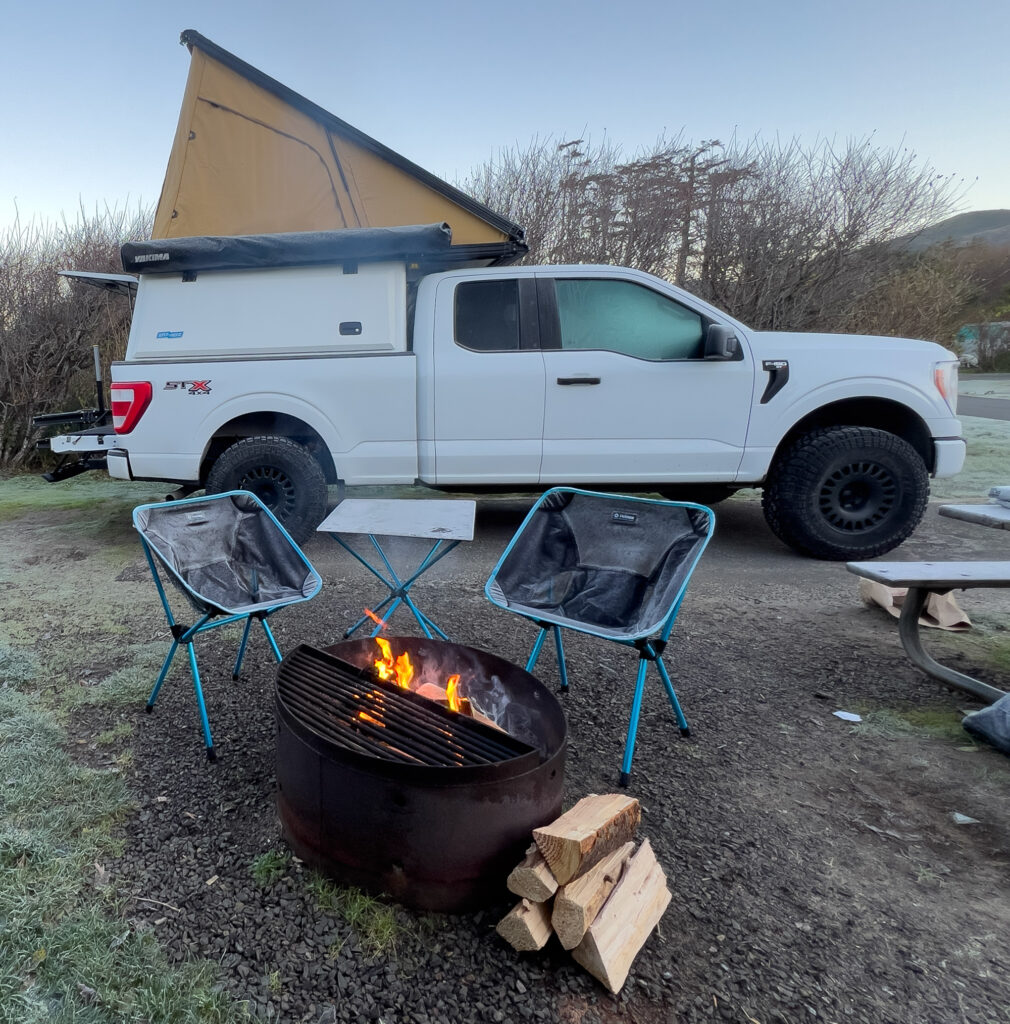
If there were any complaints, it might be the $13,499 base price tag, but it is in line with other high-quality rack-and-tent setups from some other small-batch brands. Adding needed options and overlanding accessories will add to that number, of course, but that’s to be expected when kitting out an overlanding rig with systems that are designed to last and still be flexible to changing demands going forward. I’ll be ready to try it out again… come summer.
Thanks to Super Pacific for the opportunity to try the X1 at the Oregon Coast.
What to know:
- Price: Starting at $13,499
- Camper Weight (Model Specific ) | 340-390 lbs.
- Dynamic Roof Load (Tent Closed ) | 500 lbs.
- Gas Strut Roof Load (Tent Open ) | 75 lbs. (upgradeable to 150 lbs.)
- Exterior T-Slot tracks | 4 Total (Two on lower clamshell, one upper clamshell, one upper clamshell roof slot)
- Roof Standing Weight Capacity: 300 lbs.
